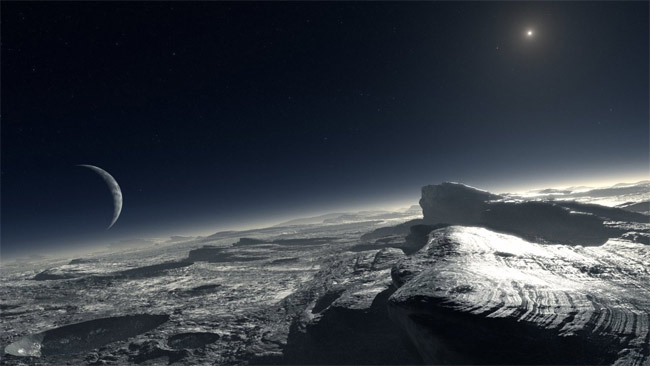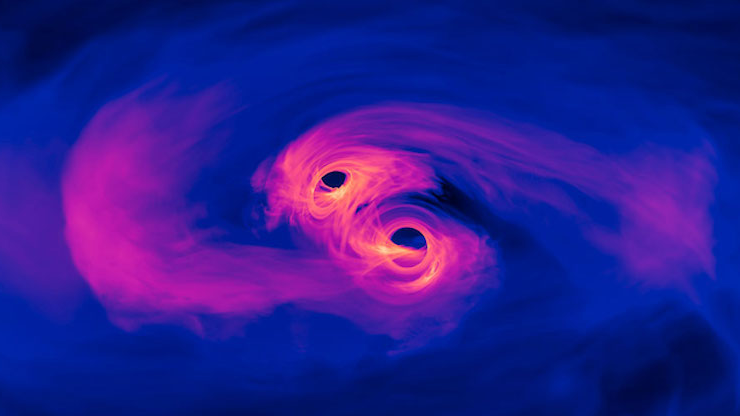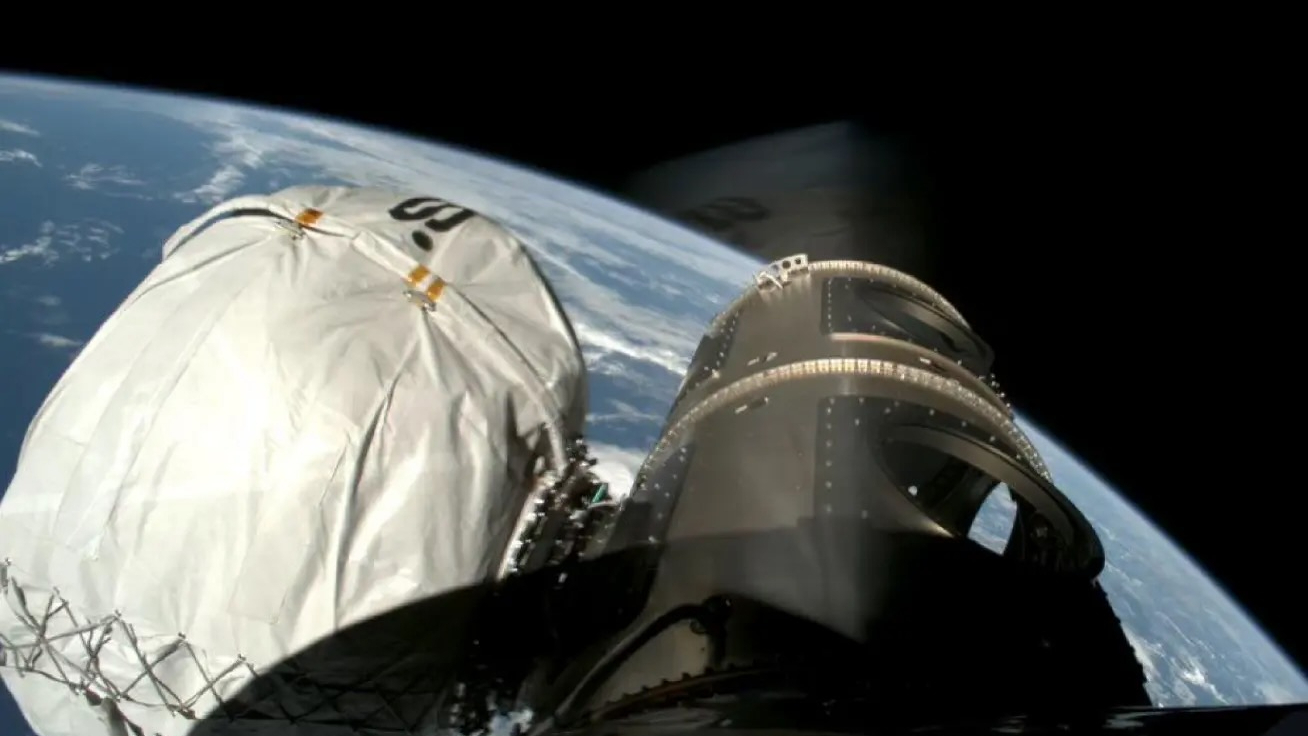Pluto's Atmosphere Warmer Than Thought

Pluto, the runt of the solar system, is still a mysteryto astronomers in many ways. But thanks to a new study of the dwarf planet?satmosphere, this misunderstood place is a little more known to us now.
Using the European Southern Observatory?s (ESO) VeryLarge Telescope in Chile, researchers made the first ever quantitativemeasurement of the chemical composition of the atmosphere around Pluto. Thestudy revealed that the dwarfplanet?s air is warmer, and contains more methane, than previously thought.
The astronomers discovered that Pluto?s atmosphere iswarmer than its surface ? though not by much. The air is afrigid -292 degrees Fahrenheit (-180 degrees Celsius), while the dwarf planet?sface is -364 degrees Fahrenheit (-220 degrees Celsius). The researchers thinksome patches of pure methane in the atmosphere, or perhaps a methane-rich layercovering the surface, create this warming effect.
?Pluto is pretty far out there, so to me it was amazingthat we got this data at all,? ESO researcher Hans-Ulrich K?ufl told SPACE.com.?It was well known that Pluto had an atmosphere, but it?s really the very firstquantitative measurement of it. We were surprised that it is thatwarm.?
Pluto?s atmosphere is very different from Earth?s: It isa tenuous layer of nitrogen, methane, and carbon monoxide thatis only present for part of Pluto?s 248-year-long, elongated orbit. When the tinyworld gets very far away from the sun, the gaseous atmosphere freezes and fallsto the ground. The pressure of Pluto?s atmosphere is only about onehundred-thousandth of that on Earth.
?It might look like a vacuum, like on the moon,? K?uflsaid. ?At this point we cannot really say if there is haze, but you might seesome kind of cirrus clouds. They would be white and gray.?
Because of the atmosphere?s thin substance, and Pluto?ssmall size and extremedistance, gathering data about the atmosphere before now has beendifficult. Previous studies noticed the uniqueseasonal changes in Pluto's atmosphere as the dwarf planet moves closer andfarther away from the Sun.
Get the Space.com Newsletter
Breaking space news, the latest updates on rocket launches, skywatching events and more!
The team harnessed the Very Large Telescope (VLT)?sstrong observing power, adaptive optics technology to reduce blurriness causedby turbulence in Earth?s atmosphere, and a high-resolution instrument called aspectrograph to make their measurements.
The CRyogenic InfraRed Echelle Spectrograph(CRIRES) on the VLT separated light from Pluto?s atmosphere into itsconstituent colors, enabling the researchers to tell what elements in the airthe light passed through. The new data, which was significantly more detailedthan any previous measurements, allowed the researchers to compare theirfindings to sophisticated computer simulations to understand how differentchemicals in the atmosphere affect temperatures.
"The combination of CRIRES and the VLT is almostlike having an advanced atmospheric research satellite orbiting Pluto,? K?ufl said.
Kaufl, with a team led by Emmanuel Lellouch of France?sObservatoire de Paris, reported the findings in a paper to be published in thejournal Astronomy & Astrophysics.
- Video: Passport to Pluto
- Pluto: From Planet to Dwarf Planet
- New Portrait Made of Pluto and its Moons
Join our Space Forums to keep talking space on the latest missions, night sky and more! And if you have a news tip, correction or comment, let us know at: community@space.com.

Clara Moskowitz is a science and space writer who joined the Space.com team in 2008 and served as Assistant Managing Editor from 2011 to 2013. Clara has a bachelor's degree in astronomy and physics from Wesleyan University, and a graduate certificate in science writing from the University of California, Santa Cruz. She covers everything from astronomy to human spaceflight and once aced a NASTAR suborbital spaceflight training program for space missions. Clara is currently Associate Editor of Scientific American. To see her latest project is, follow Clara on Twitter.









